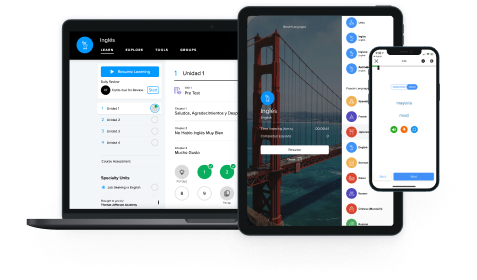If this is your first time dipping your toe into German modal verbs, we suggest that you start out with our first post, covering the uses of modal verbs in the present tense!

How to use German modal verbs in the past tense?
Like other German verbs, German modal verbs have two past tenses: the simple past tense and the perfect tense. Like other verbs, the meaning of the two tenses is more or less the same. However, when using modal verbs in German, you’ll usually use the simple past, whether you’re speaking or writing.
In this post we’ll talk first about how to form and use the past tenses of the German modal verbs (dürfen, können, mögen, müssen, sollen, and wollen). Then, at the end, we’ll talk a little about how to use them in a related construction called the “double infinitive.” Let’s have a look!
Tip
When to use German modal verbs in the past tense?
German modal verbs in the past tense have the same meanings they do in the present tense, but they simply refer to abilities, possibilities, desires, etc. that someone had in the past. Here are a few interesting points:
In addition to its main meaning of expressing ability, use the past tense of können to express that something had a successful outcome:
past tense modalmain verbKonntest du gestern mit dem Hund spielen?
Were you able to play with the dog yesterday?
→ This asks whether you succeeded in playing with the dog, not whether you had the ability to.In English, we often use “past tense” modals to make requests or discuss hypothetical situations, as in:
- Request:
Would you make me a cup of tea?
- Hypothetical:
Where would you travel if you could go anywhere?
In German, these meanings are usually accomplished using subjunctive modal verbs instead. Check out the third part of our series on German modal verbs to learn more about subjunctive modal verbs in German!
What are the main past tenses in German: a review
German has two main past tenses: the perfect tense and the simple past tense. These tenses have the same meaning, but are used in slightly different social contexts, and are formed according to different patterns.
The perfect tense is used for everyday conversation and informal writing. It’s usually formed by combining an with a past participle:
auxiliary verbpast participleIch habe einen Hund gekauft.
I bought a dog.
lit. I have bought a dog.
The simple past tense is found more commonly in literary texts and formal written narratives. It’s usually formed by adding the ending -te to the verb itself, though there are forms too.
simple past tenseIch kaufte einen Hund.
I bought a dog.
Now, let’s talk about how to use modal verbs in each of these tenses!
How to form the past tense of German modal verbs?
When you’re using modal verbs, you’ll most often be using the simple past tense, regardless of whether you’re speaking or writing. However, there are still some circumstances where you might choose to use the perfect tense instead. Let’s go over how to create each form!
How to form the simple past tense of modal verbs?
To form the simple past tense of most modal verbs, you’ll change the main vowel and add the past tense marker -te. Follow these instructions to form the simple past of modal verbs:
Modal verbs in the past tense have no umlauts, so say goodbye to ä, ü, and ö.
Take your new umlaut-free verbs, chop off the -en, and add the past tense marker -te at the end. This is your stem!
müssen
→mussen
→muss
→musste
You’ll add the agreement endings to the end of the stem, after -te, though the first person singular and third person singular don’t have an ending.
müssen
→muss
→musste
→du musstest
The forms of the German modal verbs in the simple past are given in the table below:
Subject | dürfen | können | mögen | müssen | sollen | wollen |
|---|---|---|---|---|---|---|
ich | durfte | konnte | mochte | musste | sollte | wollte |
du | durftest | konntest | mochtest | musstest | solltest | wolltest |
er/sie/es | durfte | konnte | mochte | musste | sollte | wollte |
wir | durften | konnten | mochten | mussten | ssollten | wollten |
ihr | durftet | konntet | mochtet | musstet | solltet | wolltet |
sie/Sie | durften | konnten | mochten | mussten | sollten | wollten |
Let’s see some examples. Notice that the main verb goes at the end of the clause:
Er wollte einen Hund haben, aber er durfte nicht.
He wanted to have a dog, but he wasn’t allowed to.
Er mochte Hunde, aber sollte sie nicht streicheln, denn er hatte eine Allergie.
He liked dogs, but he wasn’t supposed to pet them, because he had an allergy.
Sein Hund konnte sehr schnell rennen.
His dog could run very quickly.
How to form the perfect tense of German modal verbs?
You can put modal verbs into the perfect tense as well, though this is usually only done when using “bare” modals (i.e. without a main verb). This follows the classic perfect tense pattern: combining an auxiliary verb with a past participle:
Ich habe das nicht gedurft.
I wasn’t allowed (to do) that.
Ich habe einen braunen Hund gewollt.
I’ve wanted (to have) a brown dog.
You can make a modal verb past participle following this “recipe”:
ge
simple past stem
t
gewollt
When to use German modal verbs in the perfect tense?
Most often, you will use the simple past form of modal verbs, as this form works in all cases. However, there are some cases where you might choose to use the perfect tense instead, even if it is less common. Follow these rules:
When a modal verb is the only verb (i.e. there is no main verb) you can use either the perfect tense or the simple past — it’s just a matter of preference.
- simple past modal
Ich durfte das nicht.
I wasn’t allowed (to do) that.
→ more common - perfect tense modal
Ich habe das nicht gedurft.
I wasn’t allowed (to do) that.
→ also allowed
When a modal verb is used along with a main verb in the infinitive, you should not use the perfect tense. The simple past is a better choice.
- perfect tense modalmain verb
❌Ich habe einen Hund kaufen gedurft.
Intended: “I was allowed to buy a dog.”
- simple past modalmain verb
✅Ich durfte einen Hund kaufen.
I was allowed to buy a dog.
However, in cases like this you can sometimes use a related construction called a “double infinitive” which is a variation of the perfect tense.
Ich habe einen Hund linked text kaufen dürfen.
I was allowed to buy a dog.
Tip
In some regional varieties of German, you will hear the perfect tense (with the real past participle) in sentences where there is a main verb, but this is highly colloquial:
Ich habe das nicht kaufen gedurft.
I wasn’t allowed to buy that.
How to use double infinitive constructions with modal verbs?
In German, a double infinitive construction with modal verbs follows the formula below:
auxiliary verb
(haben)
main verb
(infinitive)
modal verb
(infinitive)
Ich habe einen Hund kaufen dürfen.
I was allowed to buy a dog.
This construction might look a lot like we are using a modal verb in the perfect tense, but notice that the modal verb is in its infinitive form and not its past participle form. Therefore, this is not actually the perfect tense, but more like a “variation” on the perfect tense.
Unlike the perfect tense, you can use a double infinitive construction as a way to use a past tense modal with a main verb.
We can also use this construction as a way to use modal verbs in the past perfect tense or in the future tense. To do so, we simply change the form of the auxiliary verb appropriately:
- auxiliary verb (past tense)main verb (infinitive)modal verb (infinitive)
Ich hatte einen Brief schreiben wollen.
I had wanted to write a letter.
- auxiliary verb (present tense)main verb (infinitive)modal verb (infinitive)
Ich werde ein Lama streicheln dürfen.
I will be allowed to pet a llama.
Want to learn a lot more about double infinitives with modals, or other kinds of double infinitive constructions in German? Check out our overview of German double infinitive constructions!
Summary
Here’s what you should remember about using German modal verbs in the past tense:
In most cases you can and should use the simple past of modal verbs, formed like this:
Remove the umlaut and the -en from the infinitive.
Add -te and then the agreement endings.
You can optionally use the perfect tense of modal verbs, if the modal verb is the only verb in the sentence (i.e. there is no main verb).
You can also use modal verbs in double-modal constructions, which work like perfect tenses except that both the modal verb and the main verb are infinitives.
Ready to practice? Check out our German past tense modal verb exercises. Or if you’re ready to keep learning, check out the last part of our series on modal verbs: German modal verbs in the subjunctive!
